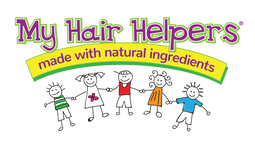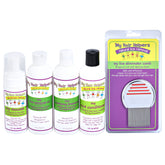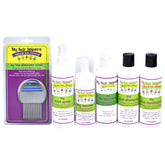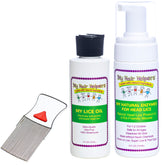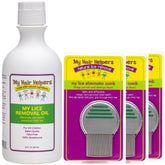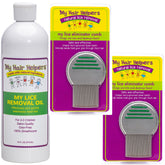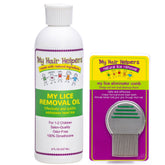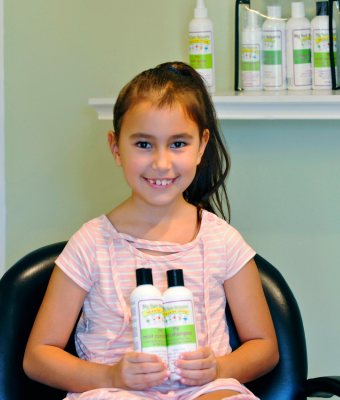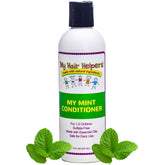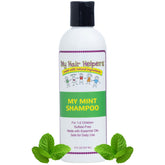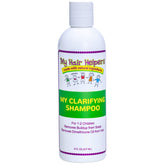WHERE DOES HEAD LICE START?

You’re scratching your head…then your child is scratching theirs…and suddenly the dreaded thought hits: Could it be lice? Before you panic, let’s take a deep breath (don’t scratch!) and get to the root of it—literally.
So, where does a head lice infestation start? How do these tiny pests end up on your scalp in the first place? And what can you do about it? Let’s unravel the mystery of these not-so-welcome visitors with a dose of fun and a pinch of science.
First Things First: What Are Head Lice?
Head lice are teeny-tiny wingless insects (about the size of a sesame seed) that live on human scalps and feed on blood. Yep, they’re basically miniature vampires, but without the drama. And unlike the myths you might’ve heard, lice don’t jump, fly, or come from dirty homes. They need very little hair to survive, which means that anyone with hair on their head can get lice.
Additionally, lice only live about a day or two off a host, as they rely on human blood to survive. This is important information to know, as people often stress themselves out more than they need to. If you or someone in your home has lice, you don’t have to deep clean your home or throw away all of your hair accessories. Most lice will die off on their own in a day or two.
So…Where Do They Come From?
Head lice start… on another head.
Head-to-head contact is the #1 way lice get around. Lice don’t spontaneously appear. They can’t jump from pets. And they definitely don’t float down from trees. They crawl (quickly!) from one person’s hair to another’s when heads get close.
This is why lice outbreaks are especially common in places like schools, daycare centers, summer camps, sleepovers, and dance classes or sports teams. These are places where kids often come in close contact with one another, giving lice the perfect opportunity to crawl from one head to the next.
So, if your child has a close friend with lice and they’ve been sharing hugs or giggling over a tablet with their heads touching, it’s the perfect opportunity for lice to say, “New scalp, who dis?”
Can Lice Spread Through Clothing and Furniture?
They can, but it’s a lot less common. Occasionally, lice may be spread through shared items like hats and helmets, hairbrushes and combs, pillows or bedding, and scarves and hoodies. However, lice don’t survive long off the human scalp—usually only 24–48 hours—so the chances of catching lice this way are much lower. Still, it's a good idea to avoid sharing personal items just to be safe!
Where on the Head Do Lice Like to Hang Out?
When lice arrive, they don’t waste time. They head straight for the warmest, most hidden spots on the scalp. Think behind the ears, at the nape of the neck, and along the hairline. This is where they lay their eggs (called nits), gluing them firmly to hair shafts. If you're checking for lice, these are the hot zones to inspect.
Remember: Lice aren’t picky about hair types, and they don’t care if your hair is clean or dirty. They just want a cozy scalp and a steady meal. Anyone with any hair texture or hygiene routine can get lice.
What to Do If You Find a Louse or Nit?
- Don’t panic. You’ve got this! Lice do need to be addressed promptly, but they don’t spread disease.
- Choose a lice solution, such as the Head Lice Complete Solution Kit from My Hair Helpers. It includes a lice comb, a product to loosen nit glue (making nits easier to comb out), and dimethicone oil to trap and slow down mature lice.
- Comb through hair with a fine-tooth lice comb. We recommend the Lice Eliminator Comb, as it’s sturdy and works effectively on nits and super lice.
- Repeat the process in 7–10 days to catch newly hatched lice.
- Wash hats, pillowcases, and brushes in hot water and dry them on high heat.
- Let friends or school staff know so they can check too. Lice are nothing to be embarrassed of, and the more you let people know, the more they can watch out for them!
From One Head to Another
To sum it up: head lice start when one little bug crawls from one person to another. It's all about close contact, not cleanliness or bad luck. The key is catching them early, treating them thoroughly, and avoiding the spread with a few smart habits.
Got the itch? Don’t stress. With a little patience (and maybe a good nit comb), you’ll send those lice packing in no time.
